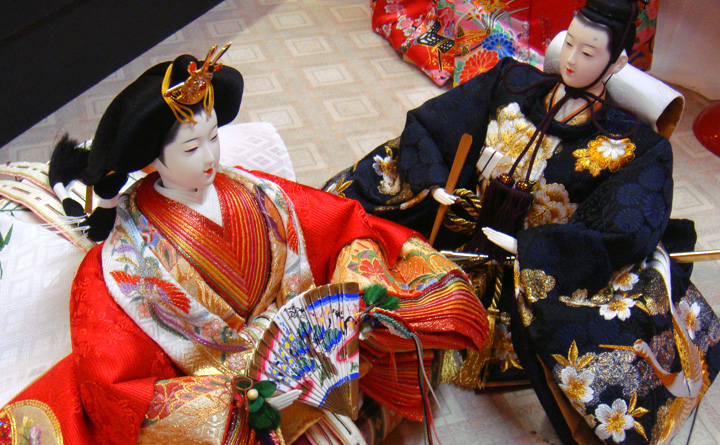The birth of a child always brings joy to a family. At the same time, the family prays for the growth and health of their child and performs several rituals to ward off bad luck.
The Hina Matsuri and other seasonal festivals originated from those rituals which were practiced for the health and good luck of families.

The Hina Matsuri has existed for at least 1,000 years.
At that time, on "Snake Day” in early March, people followed several rituals to pray for health and luck (Joushi no Sekku). One of the rituals was to drive away bad luck by throwing paper dolls into rivers or the sea, which represents the person himself/herself. Also a play called "Hiina Asobi" was popular among upper-class girls. It was similar to what we now call "playing house," playing with miniature dolls made of paper and toys to imitate palaces and furniture. After many years, these rituals and children's play mixed together and changed into the modern style of Hina Matsuri.
It is said that Joushi no Sekku was established on March 3rd in the Muromachi era, about 600 years ago. Back then, it was still characterized as a ritual. Then, about 400 years ago, in the Edo era, it became a splendid women’s festival.
In the early Edo period, the Hina Matsuri was a festival only for upper-class women, but eventually it included villagers' daughters, as well. Around the same time, it spread from the capital Edo to other regions, finally becoming the dolls’ festival for girls that we recognize today.
Courtesy of Levine Multicultural Exchange
